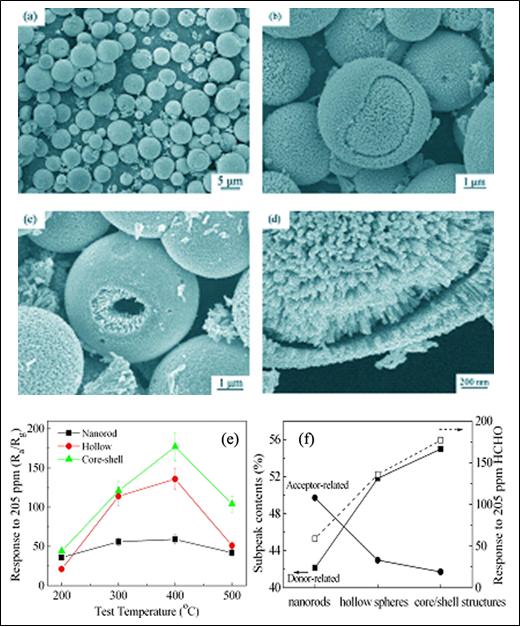The combination of shape defined building units and engineered assembly inherent in homo- or heterostructured nanostructures has led to their emergence as important candidates for advanced nanodevices because of their unique structure and derived properties that could be well manipulated by adjusting the composition and size of the core, shell or combinations. Accordingly, the success of their applications in nanodevices strongly depends on the availability of colloidal micro- and nanostructures with tightly controlled construction pattern.
In previous report, the researchers at the Institute of Process Engineering of the Chinese Academy of Sciences have developed a novel solution-controlled self-assembly process to assemble the ZnO nanorods into monodispersed hollow spheres in mixed binary solution of water and ethylene glycol. Recently, they further develop this synthesis strategy to fabricate ZnO double-wall hollow spheres in complicated ternary solvent system, and the products were assembled using nanorods as building units. The packing design of synthesized products could be well controlled from nanorods to their assemblies of hollow spheres and multishelled hollow spheres.
The further investigation reveals that the solvent composition not only controls the morphology of synthesized products, but also influences the intrinsic defects in ZnO crystals. The double-wall hollow spheres present highest donor-related and the lowest acceptor-related crystal defects, which results in the highest sensitivity to formaldehyde gas than that of the nanorods and hollow spheres. The maximam gas response of as-synthesized products is three times greater compared to that of the nanorods and 1.3 times greater than nanorod-assembled hollow spheres, which is also superior to the ZnO based gas sensors reported previously. The experiment results well illustrate that control of the shape-defined building units and their assembly structure had endowed ZnO semiconductor with high performance in applications of nanodevices.
The above work has been published on the Journal of Materials Chemistry, 2011, 21, 14277, and related research work has received support from the National Nature Science Foundation of China.
Contact: YUAN Fangli
E-mail: flyuan@home.ipe.ac.cn

(a) to (d) SEM images of ZnO nanorod-assembled multishelled hollow spheres, (e) Gas responses of the ZnO nanostructures to 205 ppm formaldehyde gas at different working temperatures and (f) Relationship between formaldehyde responses (□) and the DL (●) & AL (■) subpeaks contents of the ZnO samples at working temperature of 400 oC.
 Search
Search




 京公网安备110402500047号
京公网安备110402500047号